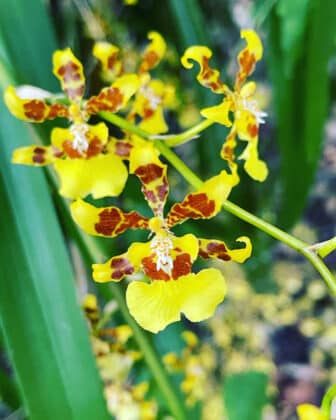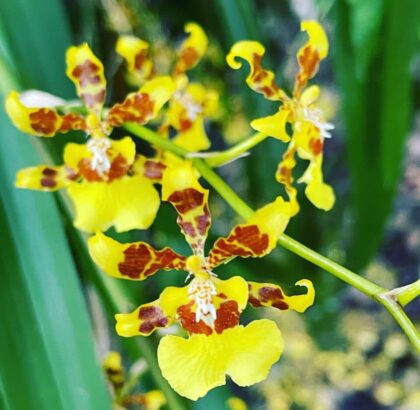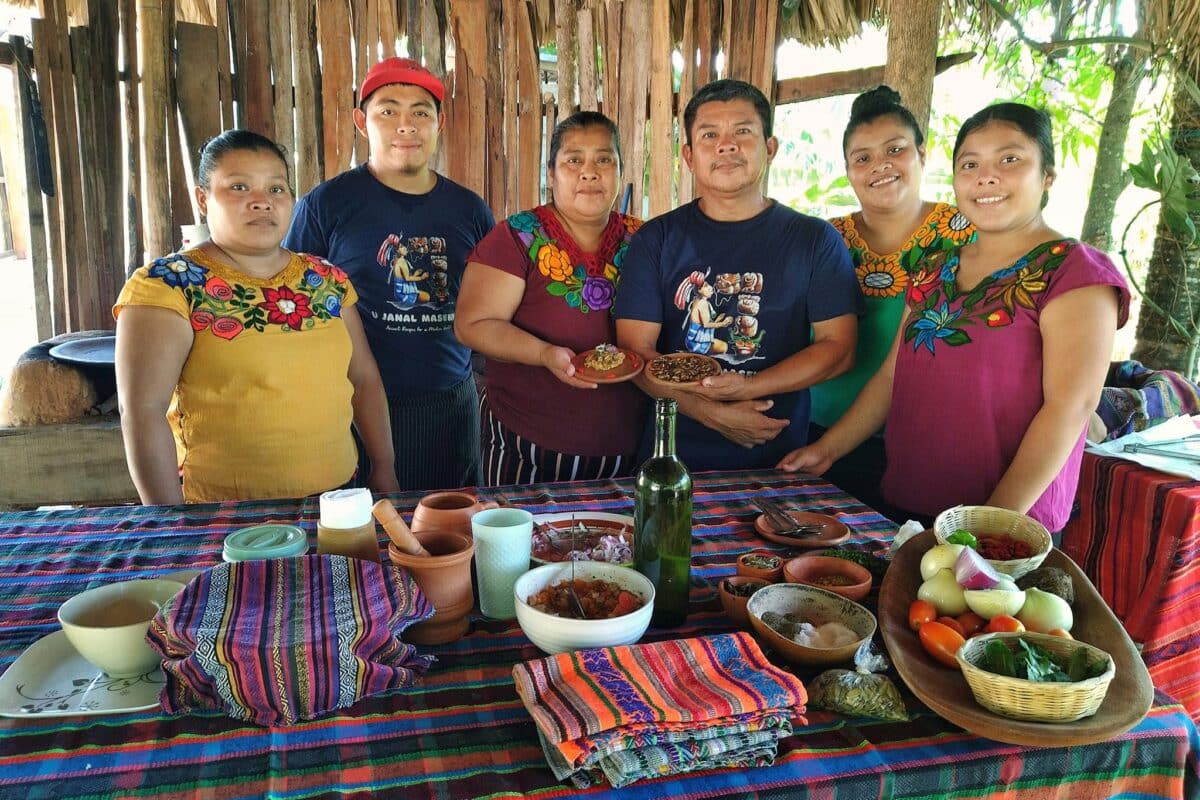It’s been more than 3 years since I wrote about my life in Belize for The Cook’s Cook and since then, so many things have changed. My husband, Jim, and I stayed in Belize during COVID. In March of 2020, Belize was the only Central American country with no confirmed cases of the COVID-19 virus and they wanted to keep it that way as long as possible. Borders were quickly closed and in late March the international airport was shut down for 6 months, then slowly reopened. So, we hunkered down in our little cement home in the Mosquitoville neighborhood outside San Ignacio to wait out the storm, not knowing when we’d get back to the United States to see family.
Government offices and restaurants shut down. Churches and schools closed and outdoor sporting events were canceled. We experienced curfews and restricted shopping hours. In a country of only around 400,000 people and the limited healthcare you’d expect to find in a developing nation, strict precautions were deemed necessary to keep people safe. But Belize relies on tourism, and with no tourist dollars coming in and resorts, restaurants and tourist attractions closed, many Belizeans had no income.
And so, they cooked. They cooked for and with extended family. Families cooked to feed the neighborhood. Groups got together and cooked for the community so as many people as possible had enough to eat. Produce grows here year-round and in farming villages, that bounty was distributed. Home bakers and taco makers made sure there was enough to go around.
They also cooked to earn a living. During the pandemic, Belizeans became even more entrepreneurial than before. The pandemic became a chance for Belizeans who worked in restaurants and resort kitchens to use their culinary talents to launch food delivery services and home-based bakeries, fresh juice businesses and tamale suppliers. After COVID cooled down, all of that remained and grew even more. The community took care of each member through cooking and turned that hard work into businesses that now help both entrepreneurs and the community thrive. Now there are locally made bottled cocktails in the supermarket, and artisan farmers’ markets with vendors offering apple pies, wine made from pineapples, mangoes and oranges, and banana bread and fancy cakes.
Food and cooking are also used to say “thank you,” or as a way to pay us for our activities in the village.
Goodbye “City” Life
Two years ago, Jim and I moved out of that home in Mosquitoville with its small, fenced yard conveniently located near restaurants, supermarkets and services, and onto a property set in 28 acres of jungle. Once owned by a couple I went to high school with in New Jersey back in the late 1970s, it was named Moonracer Farm. We now call it “Hun Chuen,” after one of the howler monkey gods from the Maya Popol Vu. We do most of our living under the thatched roof of our palapa that houses our dining and kitchen space. Outside is a fogón, the traditional Maya outdoor hearth and grill. It’s here in Oxmul Kah, the Yucatec Maya name for San Antonio village, where that entrepreneurial spirit and community cooking have helped me feel more part of my new home.
In this village of around 3,000 near the Mountain Pine Ridge area of Belize, people bond and help each other through cooking. When someone is sick at home or hospitalized, their family or a friend throws a barbeque to sell $7BZ ($3.50 US) plates of chicken with rice and beans or $2BZ tamales. At Sunday soccer games, there are always grills and coolers set up for plates to go or “to have” and if our friend Delmer’s Little Texas team is playing, we’ll go down to cheer him on, taking home some cake and dinner for that night. I try to keep track of the fundraisers on social media but now that the locals know I’m always up for whatever is on the menu, I’ll get a message letting me know the what and when.
Food and cooking are also used to say “thank you,” or as a way to pay us for our activities in the village. I was puzzled the first time a stranger left us a few avocados at the community library where Jim and I tutor kids and run a writing program, but Miss Yadira the librarian told us they were left by a parent of one of the kids. When we took a field trip to the local Oxmul Butterfly Farm with the kids, they all brought an item of food or drink to “pay” for the experience and to help the owner who had been ill.
Ancient Recipes for a Modern World
After tourism opened back up again, families in Oxmul Kah launched culinary businesses that not only give tourists a taste of Maya cuisine, but help keep their heritage and traditions alive. A new generation of Yucatec Maya want to ensure that the language is still being spoken, the hieroglyphs understood (or at least appreciated) and the arts and crafts, including pottery, embroidery and slate carving are handed down.
On visits to the little store nearby, I’ll pick up a dozen eggs and practice my Spanish with Mrs. Ixtecoc who speaks only Spanish and Maya. She’s very patient.
One such family are the Tzibs who live in the heart of the village. Sons Abdon and Frank are important leaders in the region and often organize or participate in cultural events and education outreach. Parents Saloman and Patricia, along with daughters Miriam, Nelsy and Clarita as well as Frank and Abdon, launched their Maya cooking experience, U Janal Masewal, to help tourists and locals alike enjoy their “ancient recipes for a modern world.” Frank and Abdon give lessons in Maya glyphs after meals of chaya bollos, dry escabeche tacos and coco yam fritters. Recently, Jessica’s husband, Idian Carillo, a trained chef who works at a nearby resort, started cooking 5-course meals on the fogon and comal, something he hopes to do more of.
Right around the corner from our home is Upe Nai where we often buy our vegetables. They’ve also launched a Maya culinary experience as well as a butterfly farm and birding trail and in the village is the San Antonio Women’s Cooperative where tourists can take pottery lessons, cooking classes, and more. A short trip outside Oxmul Kah brings us to Oxmul Coffee where the Mesh family took advantage of the downtime brought on by COVID and culitivated 6 coffee plants to a crop of 1500. Now they welcome people to their farm to sit next to the fire, turn the crank on the coffee roaster, and grind beans using the traditional molcajete before enjoying a cup of their rich “from the tree to the cup” brew.

Slowing Down
On our property, coconut palms grow in a large field and orchids bloom tucked away in the crook of tree branches. After two years, I don’t think we’ve seen all the orchids we have yet. Each season some new colorful flower pops up. Ginger blossoms in deep red, pink and white are all over the property and in other fields, huge mangos, sweet tangerines and grapefruit.
On visits to the little store nearby, I’ll pick up a dozen eggs and practice my Spanish with Mrs. Ixtecoc who speaks only Spanish and Maya. She’s very patient.
On our property, coconut palms grow in a large field and orchids bloom tucked away in the crook of tree branches. After two years, I don’t think we’ve seen all the orchids we have yet. Each season some new colorful flower pops up.
Ginger blossoms in deep red, pink and white are all over the property and in other fields, huge mangos, sweet tangerines and grapefruit.
On visits to the little store nearby, I’ll pick up a dozen eggs and practice my Spanish with Mrs. Ixtecoc who speaks only Spanish and Maya. She’s very patient.

We go into the “big city” of San Ignacio to the farmers market and also visit three or four of the supermarkets, all of which greatly expanded their selection in the past three years. Now, I’m more likely to find my precious Hellman’s mayo or jar of pesto, but I’m also more likely to make those myself. We still eat a lot of beans and rice or shrimp sauteed with hot peppers and I’ll roast a chicken and pick on that for a week accompanied by potatoes cooked in the fogon.
We stay at home as much as possible with all of our rescue dogs, and watch movies on a big screen under the palapa at night, munching on popcorn fresh from our theater-style popcorn machine. When I absolutely have to speak with a human being who is not Jim, I take a 5-minute walk to The Malfunktion Junktion, a roadhouse bar where expats, locals and tourists gather. It’s a chance for me to catch up on the local gossip and ask tourists about where they’re from and what they’ve been doing on their vacation, and they invariably ask me how it is we came to live here and what it’s like. I give them the background and end with, “It’s a very different life, a slow life and after 7 years, I feel at home.” ![]()

